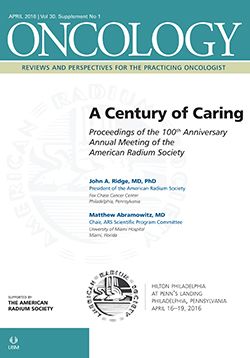(P001) Modification of Gene Expression Following Single vs Fractionated Doses of Radiation in Prostate Cancer Cell Lines
The data suggest that different cellular pathways may be activated, depending on RT regimen, leading to differential biological effects. A better understanding of these mechanisms might assist in building novel combination-treatment regimens.
Jerome Lacombe, PhD, Kevin McClain, PhD, Paul Gonzales, Steven E. Finkelstein, PhD, MD, Frederic Zenhausern, PhD; University of Arizona; 21st Century Oncology; Translational Drug Development
BACKGROUND: Treatment with external beam radiation uses fractionated doses of ≤ 2 Gy as the standard of care. However, with the development of sophisticated equipment, more precise doses can be delivered to the target while minimizing side effects to the surrounding healthy tissue. This allows for hypofractionated radiation therapy (RT) regimens utilizing higher doses in fewer fractions. Clinical studies are trying to evaluate the differential effects between fractionated and high-dose RT on patients’ outcomes (eg, normal tissue toxicity, tumor resistance, and overall survival). However, the biological response at the cellular level and the different cellular pathways involved are inadequately elucidated. Therefore, we developed a pilot study to understand these molecular changes by analyzing expression of 20 genes previously identified as biodosimetry biomarkers in leukocytes collected from small blood volumes.
METHODS: A prostate cell line was exposed to a total radiation dose of 10 Gy, administered as a single dose (SD) or by daily multiple fractions (MFs) of 5 × 2 Gy, or was sham-irradiated as control. Following RT, the Radiation Exposure Dosage Index (REDI)-Dx assay (DxTerity Diagnostics, Rancho Dominguez, CA) was performed.
RESULTS: Several key genes were downregulated (HIST1H3D, DDB2, H2AFV, RCF4, PARP1, BAX, PRIM1, and CDKN1A) or upregulated (DEDD, MDM, and TRIB2) by SD treatment. Several genes were downregulated (HIST1H3D, DDB2, RPA1, RCF4, PARP1, BAX, PRIM1, CDKN1A) or upregulated (DEDD, TRIB2) by MF treatment, as well. Interestingly, six genes (HIST1H3D, DDB2, H2AFV, RPA1, DEDD, and MDM) were differentially expressed between SD and MF treatments. HIST1H3D, DDB2, RPA1, DEDD, and MDM were downregulated on MF treatment whereas H2AFV was upregulated. All of these genes are involved in DNA binding and participate in DNA damage repair (DDB2, RFA1), chromatin organization (HIST1H3D, H2AFV), or apoptosis regulation (DEDD).
CONCLUSIONS: The data suggest that different cellular pathways may be activated, depending on RT regimen, leading to differential biological effects. A better understanding of these mechanisms might assist in building novel combination-treatment regimens.
Proceedings of the 98th Annual Meeting of the American Radium Society - americanradiumsociety.org

Targeted Therapy First Strategy Reduces Need for Chemotherapy in Newly Diagnosed LBCL
December 7th 2025Lenalidomide, tafasitamab, rituximab, and acalabrutinib alone may allow 57% of patients with newly diagnosed LBCL to receive less than the standard number of chemotherapy cycles without compromising curative potential.